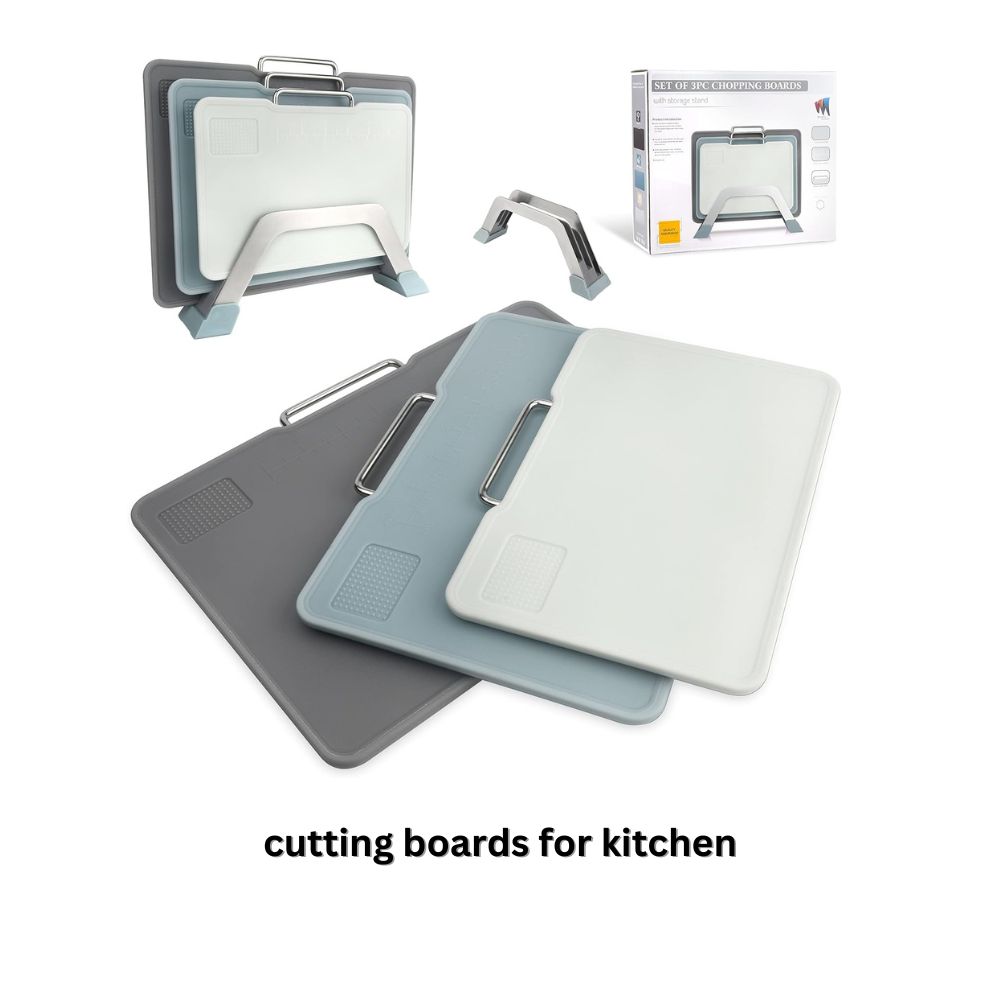Table of Contents
In the world of culinary artistry, the kitchen is our canvas, and the tools we use are our brushes. And just as an artist selects their brushes with care, a chef or home cook must choose their kitchen tools with equal consideration. Among these essential tools, a cutting board stands as a fundamental and often underrated item in any kitchen.
Whether you’re a seasoned chef or an amateur cook, the right cutting board can make a significant difference in your culinary experience. It plays a vital role in food preparation, protecting your countertop, and even influencing the lifespan of your knives. In this guide, we’ll delve into the world of cutting boards for the kitchen and help you make an informed choice when it comes to this indispensable kitchen accessory.
The Importance of Choosing the Right Cutting Board

Hygiene and Safety
One of the primary considerations when choosing a cutting board is hygiene and safety. Properly sanitizing your cutting board is crucial to prevent cross-contamination between different ingredients. Wood and plastic cutting boards are the most common choices for this reason.
- Wooden Cutting Boards: Wooden cutting boards, often made from hardwoods like maple, walnut, or cherry, are naturally antimicrobial. The porous nature of wood absorbs moisture from the surface, depriving bacteria of the environment they need to thrive. However, it’s important to note that wooden cutting boards require regular oiling and maintenance to keep them in top condition.
- Plastic Cutting Boards: Plastic cutting boards are non-porous and easy to clean. They can be sanitized in the dishwasher, making them a convenient option for those who prioritize hygiene and ease of maintenance. However, plastic boards are prone to knife marks, which can harbor bacteria over time.
Knife-Friendly Surfaces
Your choice of cutting board can also affect the lifespan and sharpness of your knives. Softer materials, like glass or ceramic, can dull your knives quickly. Conversely, harder surfaces, like wood or bamboo, are gentler on knife edges, helping them stay sharper for longer.
Size and Durability

Cutting boards come in various sizes, and the right size for you depends on your cooking habits. A larger cutting board provides more workspace and is suitable for chopping a variety of ingredients simultaneously. Smaller cutting boards are ideal for quick tasks or kitchens with limited counter space.
Durability is another crucial factor. While wood is generally durable, it can warp or crack if not properly cared for. Plastic boards are more resistant to wear and tear, but they can become discolored over time.
Types of Cutting Boards
- Wooden Cutting Boards: These boards are prized for their natural beauty and durability. They are available in various sizes and wood types, making them suitable for different purposes in the kitchen.
- Plastic Cutting Boards: Plastic cutting boards are lightweight, easy to clean, and affordable. They come in various colors, which can help prevent cross-contamination by designating specific colors for different types of ingredients.
- Bamboo Cutting Boards: Bamboo is an eco-friendly option that is both durable and knife-friendly. It’s also naturally antimicrobial, making it a popular choice among environmentally conscious consumers.
- Glass Cutting Boards: While glass cutting boards are easy to clean and maintain, they are harsh on knife edges and can cause them to dull quickly. They are best used as serving platters rather than cutting surfaces.
- Composite Cutting Boards: These boards are made from a mixture of materials, often combining the best features of wood and plastic. They are durable, easy to maintain, and gentle on knives.
Maintaining Your Cutting Board

Regardless of the type of cutting board you choose, proper maintenance is essential to ensure its longevity and hygiene.
- Cleaning: Wash your cutting board with hot, soapy water after each use. For plastic cutting boards, you can also sanitize them in the dishwasher. Wooden and bamboo boards should not be soaked but can be wiped clean with a damp cloth and mild soap.
- Oiling (for Wooden and Bamboo Boards): To prevent cracking and maintain their natural beauty, wooden and bamboo cutting boards should be oiled regularly with mineral oil or a food-safe wood conditioner.
- Disinfecting: To disinfect your cutting board, create a solution of 1 tablespoon of bleach per gallon of water. Rinse thoroughly after disinfecting.
- Avoid Cross-Contamination: Designate specific cutting boards for different types of ingredients, such as one for raw meat and another for fruits and vegetables.
Conclusion
Choosing the right cutting board for your kitchen is a decision that should not be taken lightly. It affects not only your food preparation process but also the overall safety and hygiene of your kitchen. Whether you prefer the classic charm of a wooden cutting board, the practicality of plastic, or the eco-friendliness of bamboo, each type has its unique advantages and considerations.
Ultimately, the best cutting board for you will depend on your personal preferences, cooking habits, and maintenance routine. Whichever type you choose, remember that regular care and proper sanitation are key to keeping your cutting board in top condition. With the right cutting board by your side, you’ll be better equipped to create culinary masterpieces in the heart of your kitchen.

